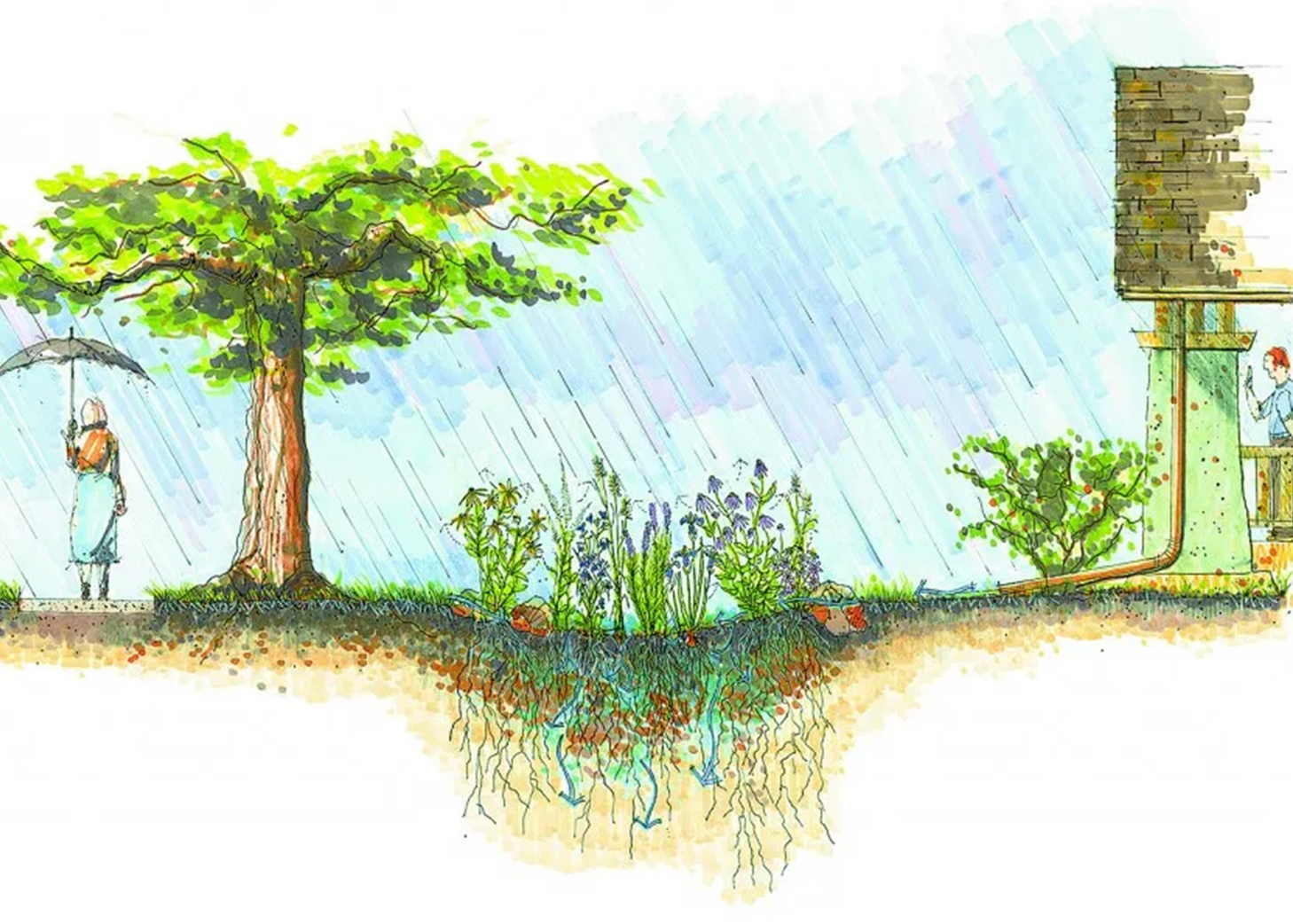O papel das comunidades para a construção de cidades resilientes: o caso do Jardim de chuva do Largo das Araucárias, Pinheiros-SP
DOI:
https://doi.org/10.11606/issn.2179-2275.labverde.2020.171431Palavras-chave:
Cidades resilientes, Cidades biofílicas, Comunidades, Jardim de chuva, Largo das AraucáriasResumo
Atualmente a maioria dos grandes centros urbanos, a exemplo da cidade de São Paulo, têm enfrentado desafios como enchentes recorrentes, aumento das ilhas de calor, contaminação do solo, desigualdade social, dentre outros, os quais resultam da somatória da história local aos crescentes efeitos das Mudanças Climáticas, fazendo com que cidades e seus habitantes experienciem seus limites físicos e anímicos, colocando à prova suas capacidades de resiliência. Frente a esta realidade, nascem novas formas de se pensar e construir as cidades, como o conceito de biofilia, e também de reivindicação, com crescente participação dos moradores, os quais respondem aos desafios através de intervenções urbanísticas que transformam significativamente a paisagem e a dinâmica local. Assim, este artigo tem como objetivo analisar o papel de intervenções paisagísticas originárias de coletivos e comunidades locais para construção de cidades resilientes. E ao trazer uma análise do Largo das Araucárias, faz ainda um paralelo com o conceito de cidades biofílicas.
Downloads
Referências
BEATLEY, Timothy. Biophilic Cities: Integrating Nature into Urban Design and Planning. Island Press, Washington, 2011. 210p.
BESSE, Jean-Marc. O gosto do mundo: Exercícios da paisagem. Editora da Universidade do Estado do Rio de Janeiro, Rio de Janeiro, 2014. 234p.
BONZI, Ramón Stock. Andar sobre Água Preta: a aplicação da infraestrutura verde em áreas densamente urbanizadas. Dissertação (Mestrado - Área de Concentração: Paisagem e Ambiente) – FAU USP, 2015.
CALLIARI, Mauro. O Largo da Batata, quem diria, está melhorando! São Paulo São, 05 de dezembro de 2016. Disponível em: <https://saopaulosao.com.br/nossos-caminhos/2369-o-largo-da-batata,-quem-diria,-est%C3%A1-melhorando.html>. Acesso em: 05 de maio2020
CARDIM PAISAGISMO. Nova praça pública: Largo das Araucárias. Online. s./d. Disponível em: <http://www.cardimpaisagismo.com.br/portfolio/largo-das-araucarias/#lightbox-gallery-bGlnaHRib3g=/49/>. Acesso em: 12 maio 2020.
FRANCO, Maria de Assunção Ribeiro. Planejamento ambiental para a cidade sustentável. São Paulo: Annablume: FAPESP, 2000. 296p.
FARIAS, José A. Resiliência: um bom conceito para o projeto e a reforma urbana? In: ENANPUR, 17, 2017, São Paulo. Anais eletrônicos. São Paulo: Anpur, 2017. Disponível em: <http://anpur.org.br/xviienanpur/principal/publicacoes/XVII.ENANPUR_Anais/ST_Sessoes_Tematicas/ST%2010/ST%2010.6/ST%2010.6-05.pdf/>. Acesso em: 01 jun. 2020
MASCARENHAS, Luisa Prado. Reconversão Urbana do largo da Batata: Revalorização e novos conteúdos da Centralidade de Pinheiros. 2014. 159f. (Dissertação de mestrado) - FFLCH USP, 2014.
MONTICELLI, Juliana. Equipamentos urbanos e resiliência no Baixo Pinheiros. Revista LABVERDE, São Paulo, v. 9 n.2, p. 81-101, maio 2019.
PERIFERIA EM MOVIMENTO. Contra enchentes, mutirão “testa” jardim de chuva no Grajaú. Online. Publicado em 5 de agosto de 2019. Disponível em: <http://periferiaemmovimento.com.br/contra-enchentes-mutirao-testa-jardimde-chuva-no-grajau/>. Acesso em: 10 maio 2020.
SHIGEEDA, Sérgio. Facebook. Postado em 16 de dezembro de 2017. Disponível em: <https://www.facebook.com/media/set/?set=a.1498408816940129&type=3> Acesso em: 12 maio 2020.

Downloads
Publicado
Edição
Seção
Licença
Copyright (c) 2020 Elis Cristina Morales dos Santos

Este trabalho está licenciado sob uma licença Creative Commons Attribution-NonCommercial-ShareAlike 4.0 International License.
O detentor dos direitos autorais é o autor e eventuais coautores do artigo. A Revista LABVERDE exige apenas o ineditismo na publicação do artigo. O autor tem o direito de divulgar seu artigo conforme sua conveniência devendo citar a revista.
A Revista LABVERDE autoriza a republicação de seus artigos desde que devidamente citada fonte e autoria.


